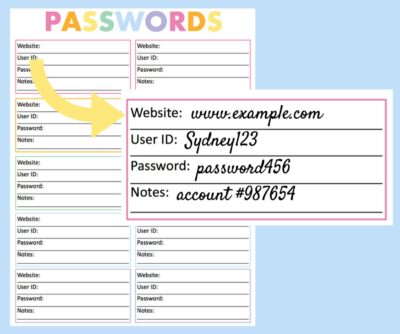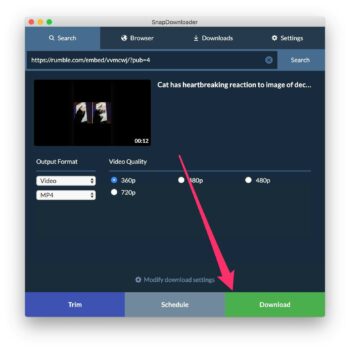Before we dive into the specifics of citing photos from Shutterstock, it's crucial to grasp the concepts of copyright and licensing. These legal principles govern how images and creative works can be used, shared, and attributed. Here's what you need to know:
Copyright Basics
Copyright is a form of legal protection granted to the creators of original works. It includes photographs, art, literature, and more. This protection gives the creator exclusive rights to their work, preventing others from using it without permission.
Key points to remember:
- Copyright protection is automatic as soon as a work is created and fixed in a tangible medium.
- It usually lasts for the creator's lifetime plus 70 years.
Licensing Agreements
Photographers and artists on Shutterstock typically grant licenses for their works, allowing others to use them under certain conditions. Understanding these licenses is crucial for proper attribution.
Common types of licenses include:
| License Type | Usage Rights |
|---|---|
| Public Domain | No restrictions; free to use without attribution. |
| Royalty-Free | Can be used with a one-time fee; no need to pay for each use but still requires attribution. |
| Rights-Managed | Specific terms and fees for each use; attribution is usually required. |
Attribution and Its Importance
Attribution is the act of giving credit to the creator when using their work. Even if the image you want to use is under a license that doesn't require attribution, it's still a good practice to acknowledge the artist's effort and talent. Proper attribution helps build a respectful and ethical online community.
Now that you have a foundation in copyright and licensing, let's explore why citing photos properly is so essential in the next section.
Why Citing Photos Matters
Properly citing photos is not just about following rules and regulations; it holds significance for a variety of reasons, both ethical and practical. Let's explore why giving credit to image creators is crucial:
Ethical Responsibility
1. Acknowledging the Creator: When you use a photo from Shutterstock, you are benefiting from the talent and hard work of a photographer or artist. Citing the source is a way to show respect and appreciation for their efforts.
2. Encouraging Creativity: Proper attribution can motivate creators to continue producing high-quality content, knowing that their work is recognized and valued.
Legal Obligations
1. Compliance with Licensing Terms: Many images on Shutterstock come with specific licensing agreements. To avoid potential legal issues, it's essential to adhere to these terms, which often include proper attribution.
Avoiding Plagiarism
1. Academic and Professional Integrity: If you're using images in academic papers, presentations, or professional projects, failing to cite your sources can lead to accusations of plagiarism. Proper attribution safeguards your reputation and credibility.
Enhancing Credibility
1. Establishing Trust: Whether you're a blogger, journalist, or content creator, citing photos enhances the trustworthiness of your content. Readers are more likely to trust and engage with material that demonstrates responsible sourcing and citation.
SEO Benefits
1. Improved Search Rankings: Search engines consider proper attribution as a positive factor for ranking content. This can result in better visibility and more organic traffic to your website.
Community and Industry Standards
1. Following Best Practices: In various industries, there are established standards and guidelines for citing and attributing visual content. Adhering to these practices is essential for professional recognition and acceptance within your community.
By understanding why citing photos is important, you're better equipped to navigate the world of image usage responsibly. The next section of our guide will provide you with a step-by-step process for correctly citing photos from Shutterstock.
Also Read This: Shop Support: The Art of Following Shops on Etsy
Step-by-Step Guide to Citing a Photo
Now that you understand the importance of citing photos, let's delve into the practical steps for correctly attributing a photo from Shutterstock. Whether you're using an image for a blog post, social media, or any other purpose, following these steps is essential:
1. Identify the Image Source
Begin by identifying the Shutterstock image you want to use. Take note of the image's title, ID number, and the name of the photographer or artist. This information will be crucial for attribution.
2. Determine the License Type
Check the licensing agreement associated with the image. This will specify the terms of use, including whether attribution is required and, if so, how it should be done. Common license types include Public Domain, Royalty-Free, and Rights-Managed.
3. Create a Proper Citation
Based on the license and attribution requirements, create a citation for the image. This citation typically includes the following elements:
| Element | Example |
|---|---|
| Photographer/Artist Name | John Smith |
| Image Title | "Sunset Over the Mountains" |
| Source (Shutterstock) | Shutterstock |
| License Type | Royalty-Free |
| License ID/Number | 123456789 |
4. Proper Placement of the Citation
Where you place the citation can vary depending on the context. In most cases, it should be located near the image or in the caption of the image. Make sure it is easily visible and accessible to your audience.
5. Use a Clear and Consistent Format
Consistency is key when it comes to citing images. Use a format that is clear and easy to follow. This not only ensures proper attribution but also enhances the overall professionalism of your work.
6. Review and Verify
Before publishing your content, double-check that your citation follows the specific requirements of the image's license. Accuracy is crucial to ensure you're compliant with legal and ethical standards.
By following these steps, you can confidently use Shutterstock images while giving proper credit to their creators. Remember that responsible image usage not only benefits you but also supports the talented individuals who share their work on platforms like Shutterstock.
Also Read This: Project Precision: Creating a Construction Schedule in Microsoft Project
Best Practices for Citing Photos
While you now have a step-by-step guide to citing photos, it's important to consider best practices that go beyond the technical aspects. These practices help you ensure that your image citations are respectful, ethical, and enhance the overall quality of your content:
1. Be Transparent and Clear
When attributing a photo, be transparent about the source. Clearly mention the photographer or artist's name and the image title. Transparency builds trust with your audience and the original creator.
2. Use a Consistent Format
Consistency in citation format is essential. Whether you're using an academic style, a specific industry standard, or creating your own, make sure it's applied uniformly throughout your content.
3. Link to the Image Source
Whenever possible, provide a clickable link to the original image source on Shutterstock. This allows your audience to explore more of the creator's work and demonstrates your commitment to giving credit where it's due.
4. Avoid Misleading Attribution
Ensure that the attribution is accurate and doesn't create a false impression about the image's creator or source. Misleading attribution can harm the reputation of both you and the original artist.
5. Respect the License Terms
Always adhere to the specific terms and conditions of the image's license. If the license requires you to include additional information, such as the license ID or a specific attribution format, follow these guidelines diligently.
6. Attribute for All Uses
Even if the license permits use without attribution, it's still a best practice to give credit. It shows appreciation for the work and encourages a culture of ethical image usage online.
7. Educate Your Audience
Incorporate a brief explanation of the importance of attribution in your content. This educates your audience about responsible image usage and encourages them to follow the same practices.
8. Update Citations as Necessary
If the information related to the image, its licensing, or the creator changes, be prepared to update your citations accordingly. This keeps your content accurate and reliable over time.
By following these best practices, you not only ensure proper attribution but also contribute to a culture of respect and integrity in the online community. Responsible citing of photos benefits both content creators and consumers alike, fostering a positive and ethical online environment.
Oh my god, look at that face! She looks like someone who’s about to drop #1989TaylorsVersion in 13 days. 🥹🩵 Pre-order now at: https://t.co/ThO5U3kRWK
📸: John Salangsang / Shutterstock pic.twitter.com/cBjgbnxltT
— Taylor Nation (@taylornation13) October 15, 2023
Also Read This: User Identity Update: Changing Your eBay Username
FAQs
Here are some frequently asked questions regarding citing photos from Shutterstock and the best practices to follow:
1. Is it always necessary to attribute photos from Shutterstock?
In most cases, yes. The specific requirements for attribution depend on the image's licensing agreement. Even if the license permits use without attribution, it's considered good practice to give credit to the creator.
2. What is the standard format for attributing photos?
There isn't a one-size-fits-all format. Attribution formats can vary based on the licensing agreement and industry standards. However, a typical format includes the photographer or artist's name, the image title, a link to the source, and other required elements specified in the license.
3. Can I use Shutterstock images in commercial projects without attribution?
It depends on the licensing agreement. Many Shutterstock images fall under the Royalty-Free license, which often allows for commercial use without attribution. However, it's essential to review the specific terms of the license for each image to be sure.
4. What should I do if I can't find the original source or photographer's name for an image on Shutterstock?
If you cannot find the original source or photographer's name, it's advisable to choose another image or contact Shutterstock's support for assistance. Proper attribution is crucial, and using an image without the means to attribute it can lead to ethical and legal issues.
5. Can I modify a Shutterstock image and still use it with attribution?
Modifying a Shutterstock image may be allowed, but it depends on the licensing agreement. Some licenses permit modifications, while others do not. Always check the specific terms of the image's license to ensure compliance.
6. How can I educate my audience about the importance of proper image attribution?
You can include a brief explanation in your content about the significance of attributing images and the benefits of responsible image usage. Encouraging your audience to follow the same practices can help promote a culture of ethical image usage online.
7. Are there tools or resources that can assist with image attribution?
Yes, there are online tools and services that can help automate image attribution. These tools can generate proper citations based on the image and its source. However, it's important to review the generated citation to ensure accuracy and compliance with the licensing terms.
Properly attributing photos from Shutterstock is an essential aspect of ethical image usage. If you have more questions or encounter specific situations, don't hesitate to seek guidance or support to ensure you're adhering to best practices and respecting the rights of image creators.
Conclusion
Citing photos from Shutterstock is more than a mere formality; it's a fundamental aspect of responsible content creation. This comprehensive guide has walked you through the essentials of understanding copyright and licensing, emphasized the importance of proper attribution, and provided you with a step-by-step process for correctly citing photos. You've also learned about the best practices that go beyond the technicalities, promoting a culture of ethical image usage.
Remember that when you use images from platforms like Shutterstock, you are benefiting from the artistic talent of photographers and artists. Proper attribution not only shows respect for their work but also contributes to building trust and credibility in your own content.
Whether you're a blogger, student, journalist, or any other content creator, following these guidelines ensures that your work remains compliant with legal and ethical standards. By educating your audience about the significance of proper attribution, you can also inspire others to adopt responsible image usage practices.
In the digital age, image sharing is prolific, and it's easy to forget the humans behind the lens or the brush. Responsible citing of photos is a way to honor their creativity and dedication. So, as you continue to create and share content, do so with integrity, and let the world know where credit is due.
Thank you for taking the time to explore this comprehensive guide on how to cite photos from Shutterstock. By following these principles, you contribute to a culture of respect and ethical usage within the digital landscape.













